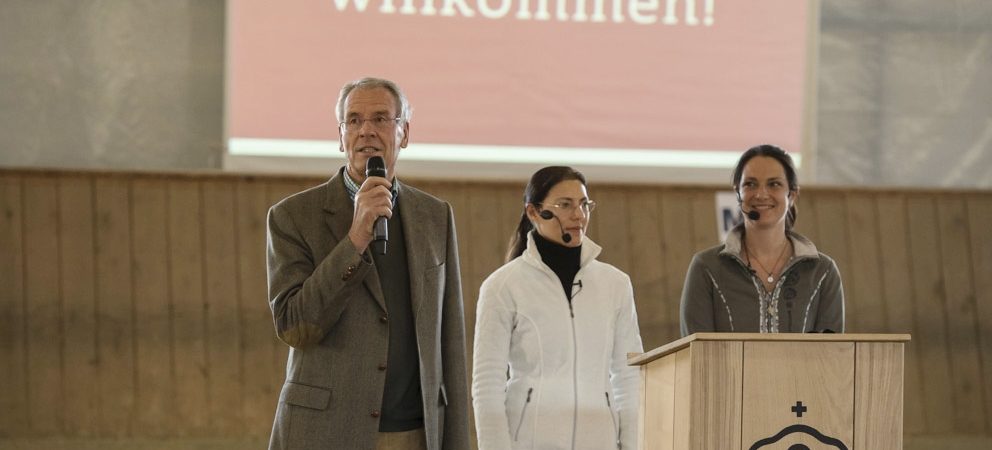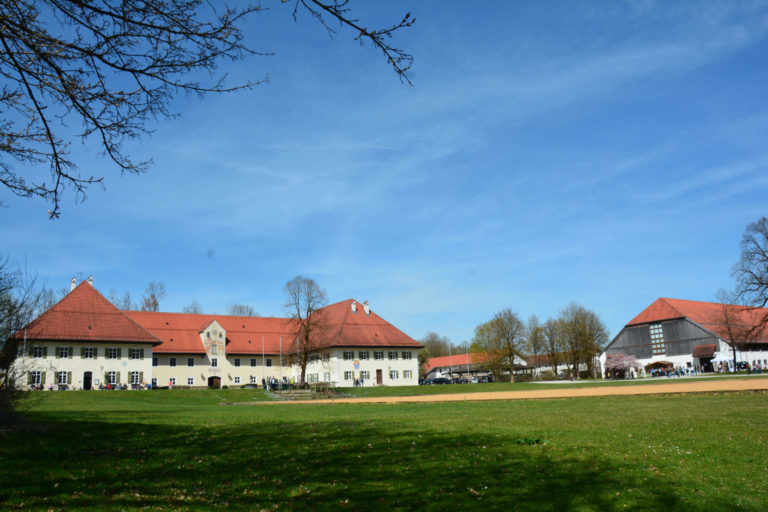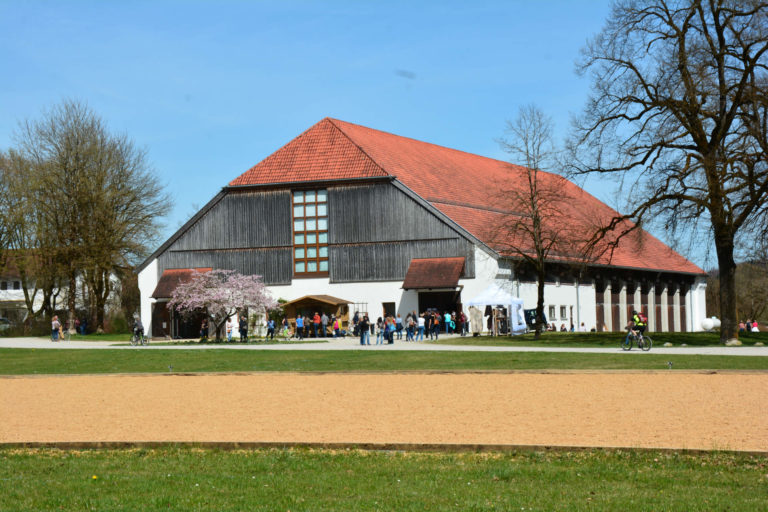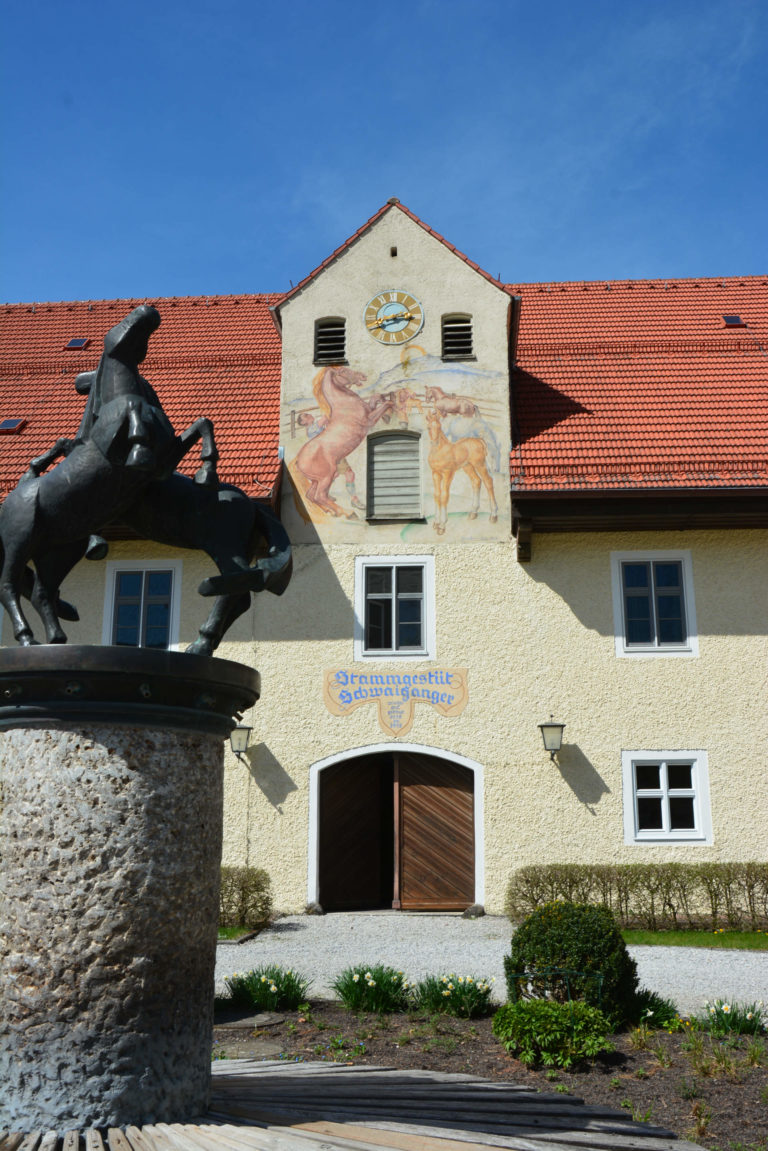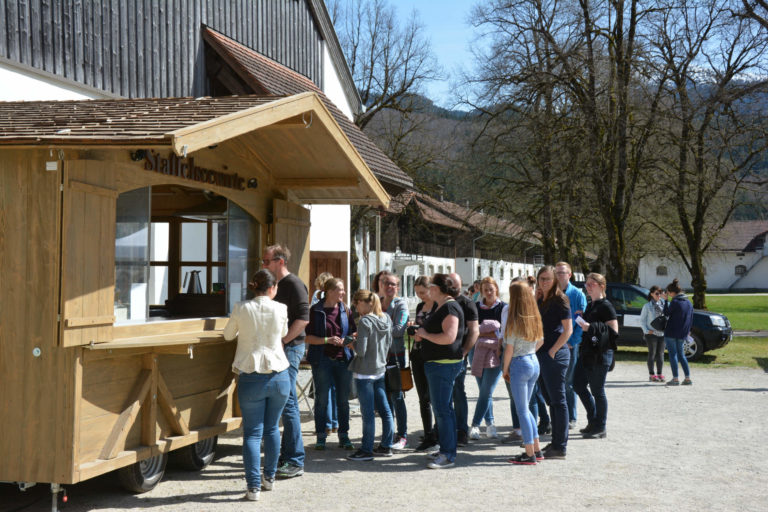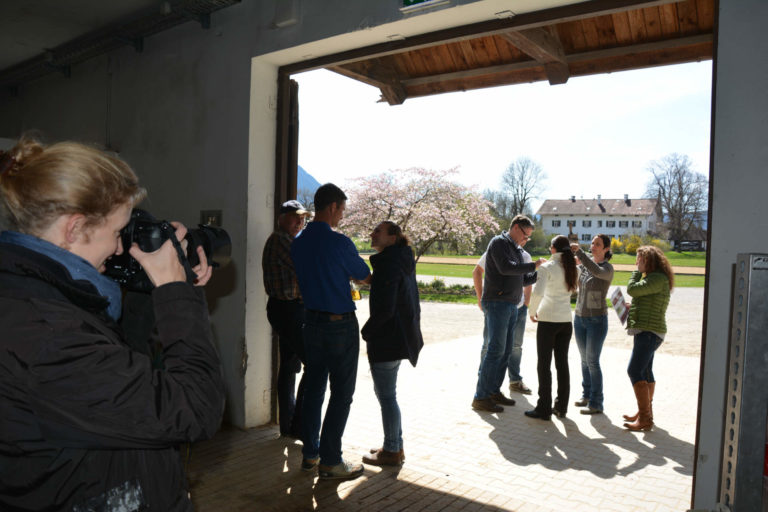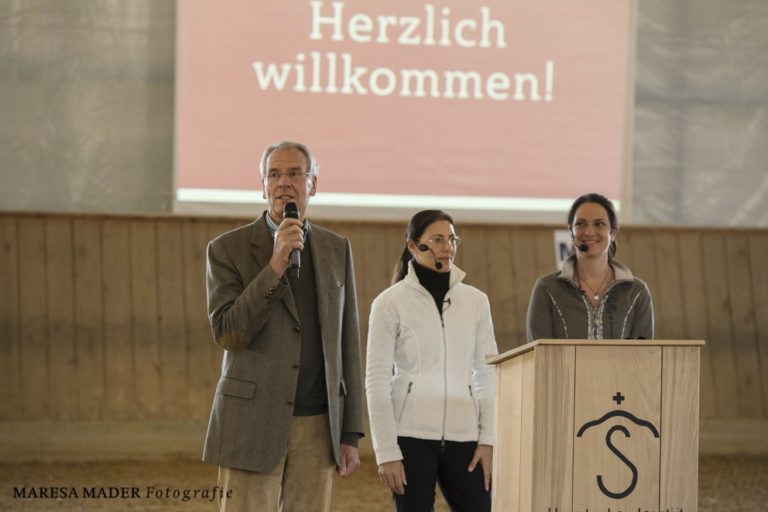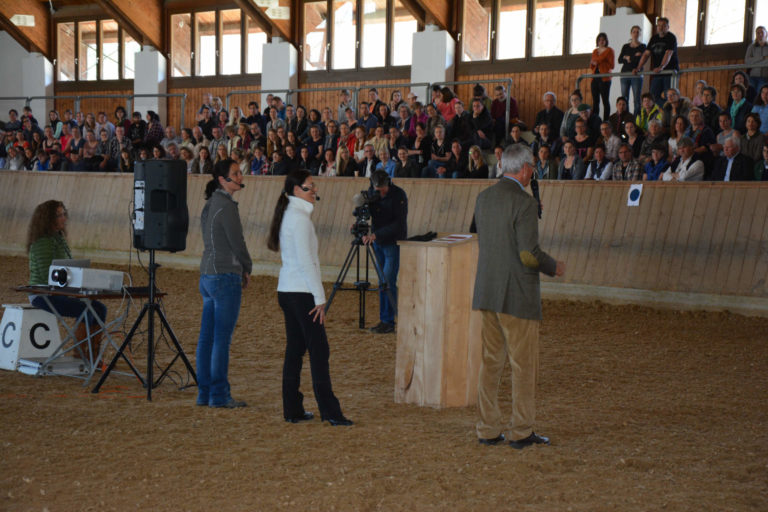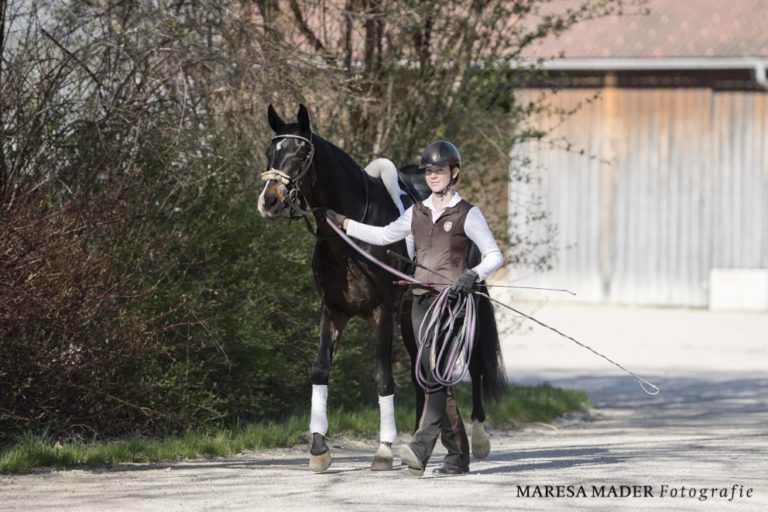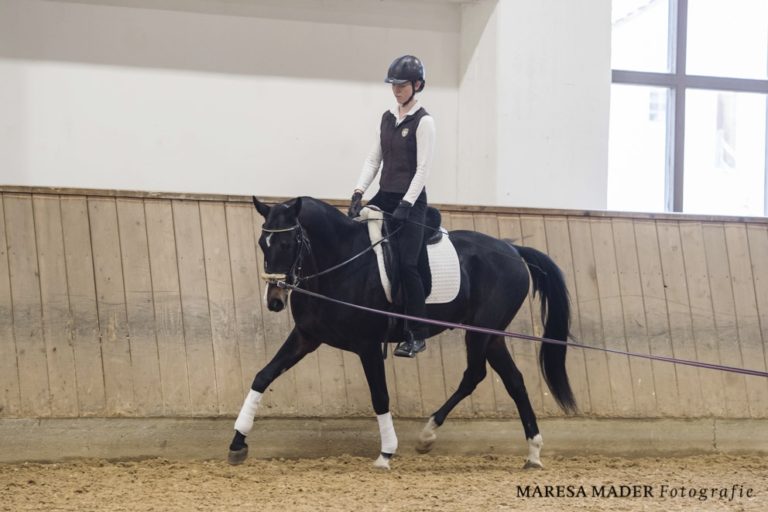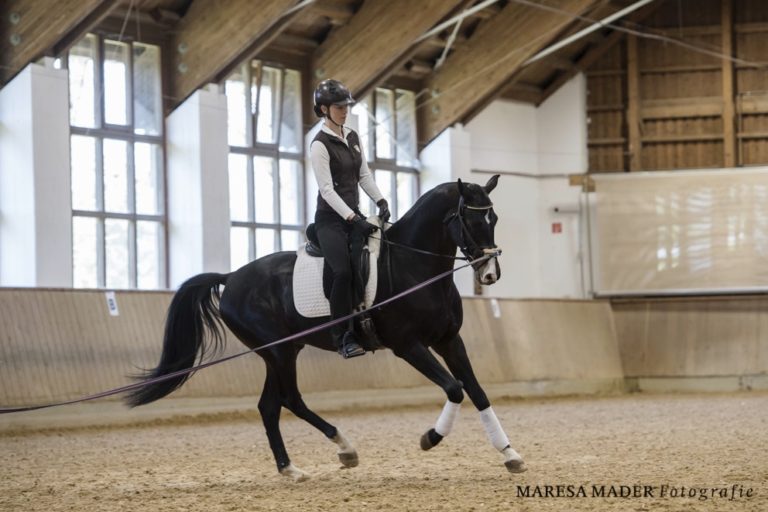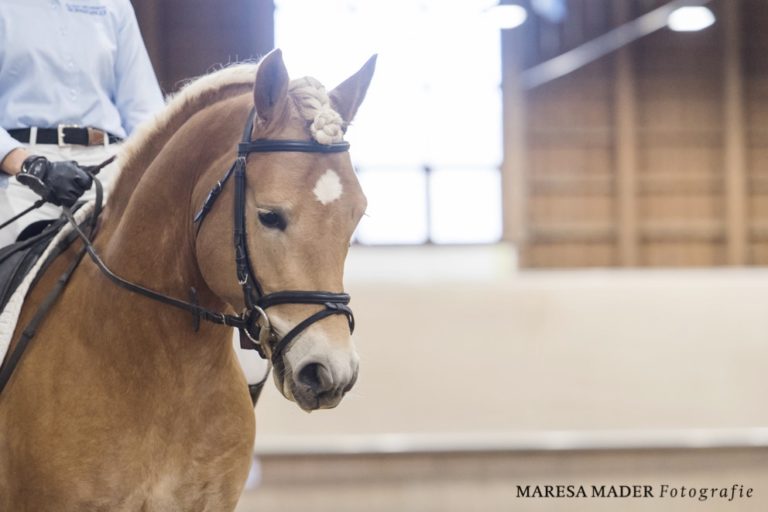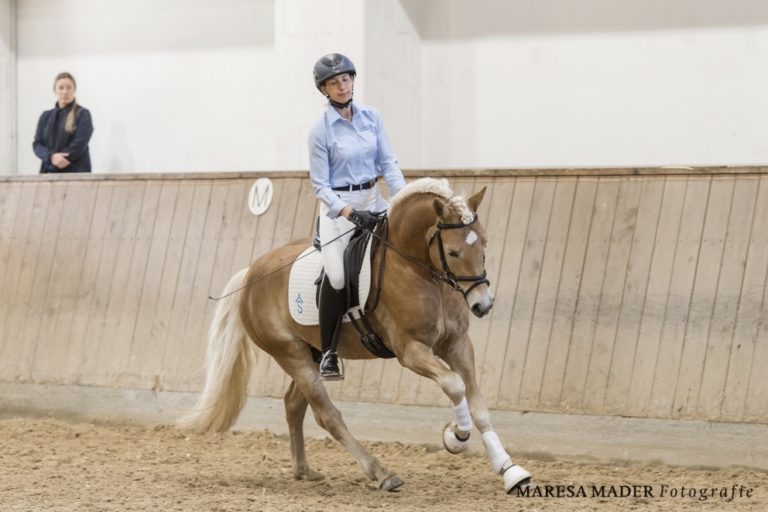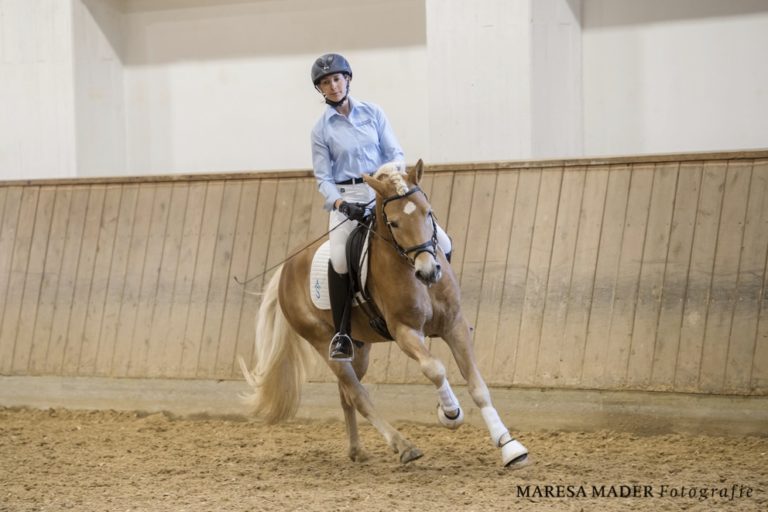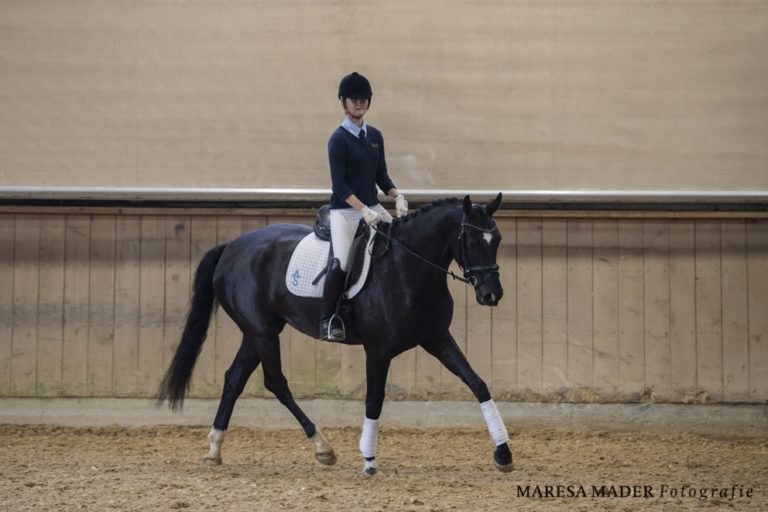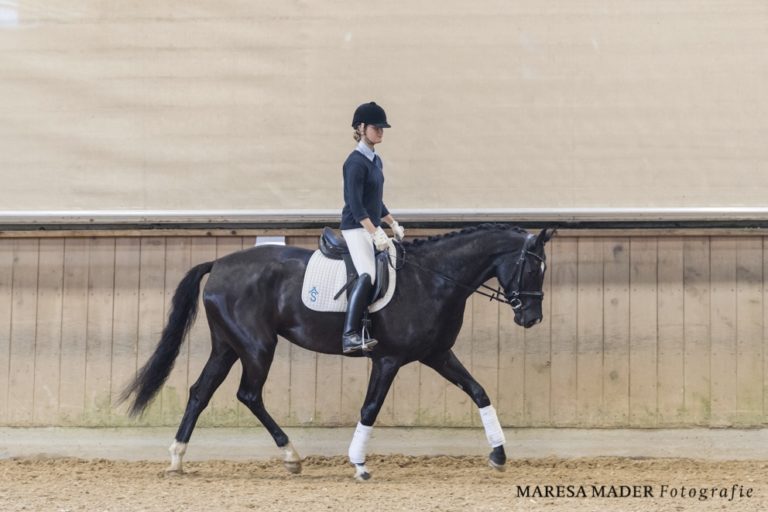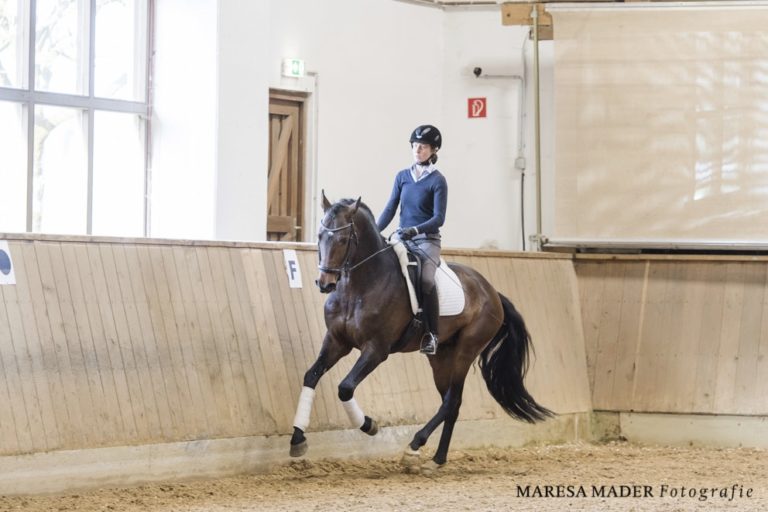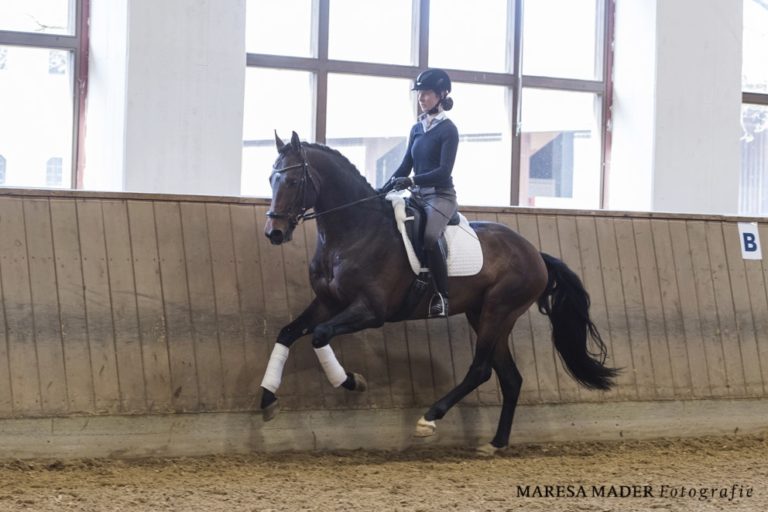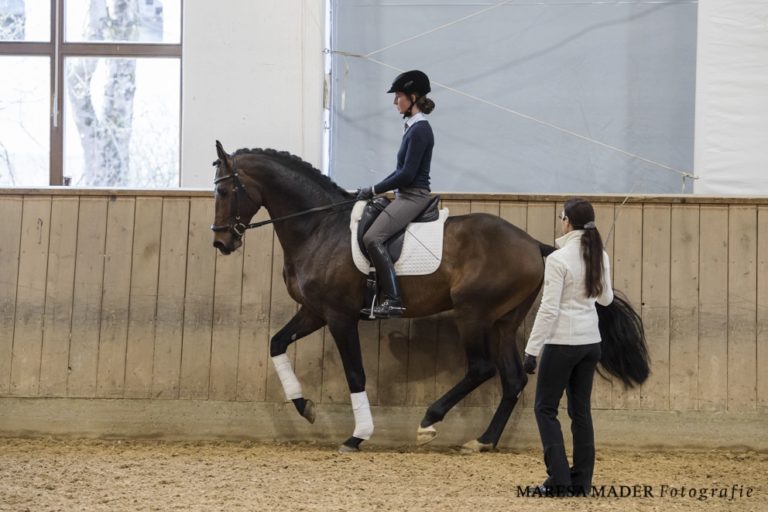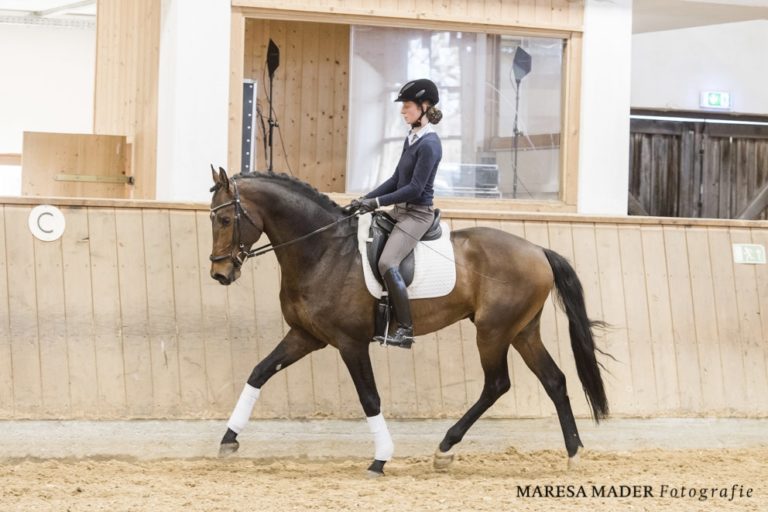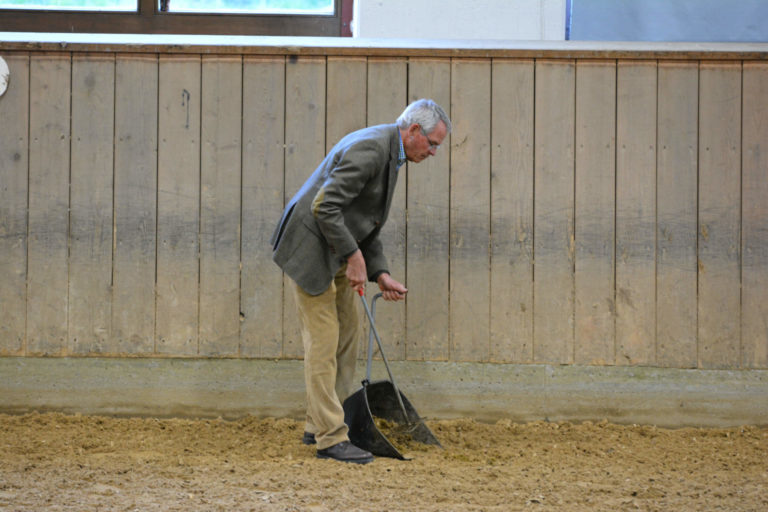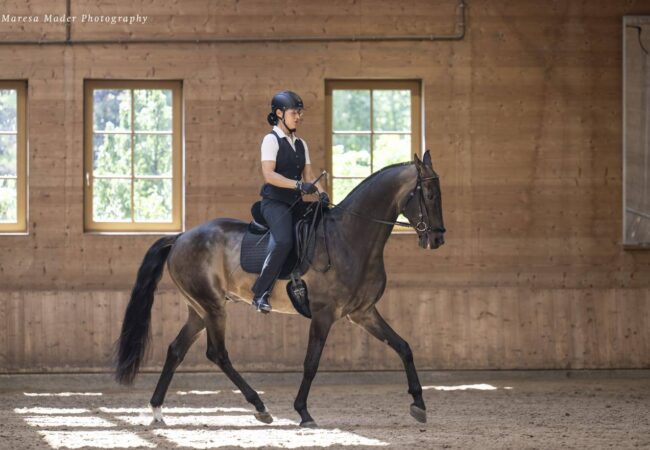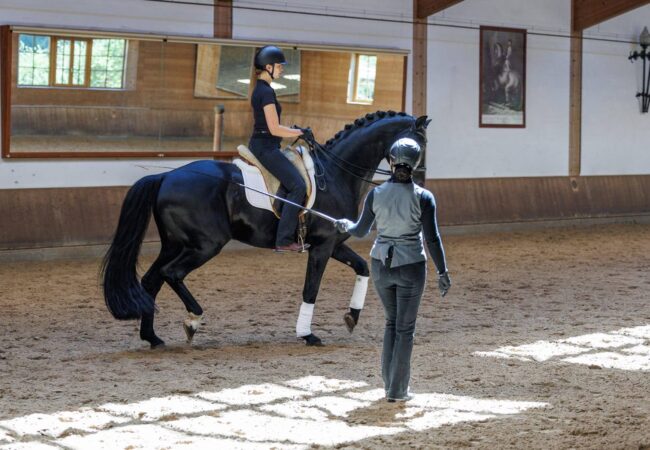Snow-capped mountains and glorious sunshine: Schwaiganger Principal and State Stud once again provided a magnificent reception for Anja Beran and her guests at the “Training of Young Horses according to Classical Principles” seminar. Stud director, Dr. Eberhard Senckenberg, welcomed the visitors in a short address given in the large – and fully packed – indoor riding school.
Theory
Anja Beran, with professional support from veterinary surgeon Elisabeth Albescu, introduced the topic of “young horses” with a theory-based talk. She placed great emphasis on clarifying the fundamental aim of all dressage training, illustrating her point with a quotation by Waldemar Seunig:
“The young horse must regain the natural carriage and inherent freedom and confidence in its movements as they existed prior to bearing the rider’s weight.”
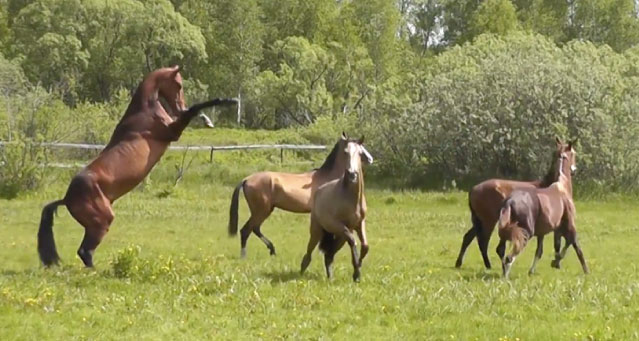
Veterinary surgeon Elisabeth Albescu gave a short overview about the development of the young horse, from gaining new teeth to growing bones and hormonal and psychological development. This should all be fundamental knowledge for every trainer and rider who works with young horses, so that they can structure the training in an appropriate way for the horse and according to the classical principles.
What equipment is required for the work with young horses and how the individual training stages build on one another, is then explained by Anja Beran based on her over 30 years of practical experience and using quotations, for example from the FN Principles of Riding and Driving.
A further important point is learning the rider’s aids. So that the horse becomes motivated, understanding and obedient, and learns to collect by itself, Udo Bürger requires, as this example illustrates, the clear interplay between driving and restraining aids:
“It is just as easy as driving a car: when you start to accelerate, you can’t put the brakes on at the same time and when you brake, it’s not possible to accelerate at the same time. If smoke developed from horses which are clenched between restricting hands and squeezing legs as cars do when driven with the brake on, some people would always have to wear a smoke protection mask when riding.”
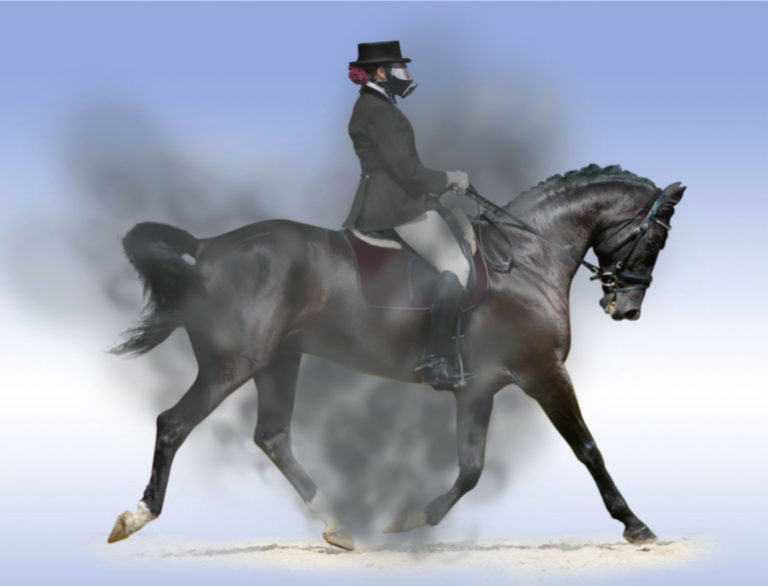
Anja Beran formulates the ultimate priority in working with young horses as follows: “The horse moves in horizontal balance under the rider.” She views the use of auxiliary reins critically because, she warns sternly: “if the horse is damaged by dressage, then the whole point of the exercise is missed!” Both Anja Beran, as trainer, and Elisabeth Albescu, as veterinary surgeon, identify time as being clearly the most important factor in training young horses according to classical principles. Against this background, Anja Beran sees the requirements which nowadays are already being imposed on three-year old horses in the context of breeding tests, licensing events, federal championship competitions and auctions in extremely critical terms.
In cartoon animations, she compares the sequences of movement of a remonte according to the classical principles with the method of “deep and narrow” positioning which is unfortunately far too common today, and underlines her analysis with the FN Principles of Riding and Driving – Volume 1:
“NARROW AND DEEP – This procedure is always a consequence of incorrectly understood riding – and it makes the consequences described above even worse. This way, the horse has no chance at all of coming into balance!”
Veterinary surgeon Elisabth Albescu provided seminar participants with a very clear illustration of the health consequences of this misunderstanding.
To put it more clearly into perspective, Anja Beran gave a brief theoretical outline of how further training of the remonte within the scope of classical dressage should proceed, with gymnasticising in the lateral movements playing a core role. This work, nevertheless, must always be preceded by an analysis of the individual weakness and the natural crookedness of the horse – because there is no standardised method of procedure in classical dressage!
Practice
This will now become particularly clear in the following practical section where some very different young horses are presented: An Achal Tekkiner, a Haflinger, a Bavarian mare and a Bavarian stallion – the latter three all bred at Schwaiganger Principal and State Stud – show impressively how, in her work, Anja Beran gives specific attention to each individual horse.
First of all we see five-year old Achal Tekkiner Degni Shael, ridden by Anja Beran’s first professional rider Vera Munderloh. Degni Shael came to Anja Beran, approximately three months ago, from Russia where he had already been active as a race horse. Degni Shael is ridden on the lunge in the large indoor riding school at Schwaiganger. This gives the young horse a sense of trust and confidence at his first public appearance, which is not even within his own familiar surroundings. The Achal Tekkiner has a particularly impressive uphill canter, which is extremely pleasant for the rider.
Next to enter the arena are two horses bred and kept at Schwaiganger Principal and State Stud: four-year old Haflinger stallion Stakkato under Schwaiganger rider Isabelle Platz and Warmblood mare Sans Souci, also four years old, ridden by Schwaiganger trainee Ina Weinmann. Stakkato gives a very confident presentation in the company of so many visitors. With this horse Anja Beran places great importance on an even, calm walk, on taking of the rider’s hand and a prompt reaction to the leg aids. The analysis of the natural crookedness is important as a basis for ongoing work because this is particularly pronounced in Stakkato’s case – he is considerably stiffer on one side than the other. He compensates this with other outstanding features, however, such as his canter with excellent forward impulsion – and great Haflinger charm. The mare Sans Souci is quite obviously nervous and bursting with energy, but Anja Beran engages her in a relaxed trot to achieve suppleness and a rider who does not encumber the horse. Top priority in this context is for the mare to react well to the rider’s aids. Anja Beran, to finish with, shows Isabelle Platz performing an important exercise for young horses with Stakkato in ground work: stepping over in hand.
The crowning glory comes with six-year old licensed stallion Bailando, reared at Schwaiganger, under horse management expert Eva Steinbach. As the stallion is very nervous and has lots of pent-up energy, Anja Beran begins immediately with trotting work: “It is always important to adapt to the horse’s requirements”, she explains. It is essential always to have a flexible approach. Bailando is a horse with great potential “and so it is particularly important not to require too much, to scrutinise consistently what you are doing with it and to develop the horse carefully”, Anja Beran summarises her training method with the stallion. Bailando impresses with the excellent forward movement of his canter – “it’s almost like flying” his rider Eva Steinbach sums up the sensation. The piaffe is also developing gradually, still slightly reserved in the foreleg, but already with a more attractive neck, better contact and more uphill topline than was initially the case.
After this practical part, Anja Beran answered visitors’ questions and expressed her thanks to everyone for coming. Photographer Maresa Mader, as always, has captured the most attractive moments of this seminar with her camera. A small excerpt, together with pictures taken by Inge Vogel, are available for viewing in the picture gallery.
Anyone unable to attend the seminar will soon have the opportunity of following it online, because Thomas Vogel of pferdia filmed the entire event: www.pferdia.de

